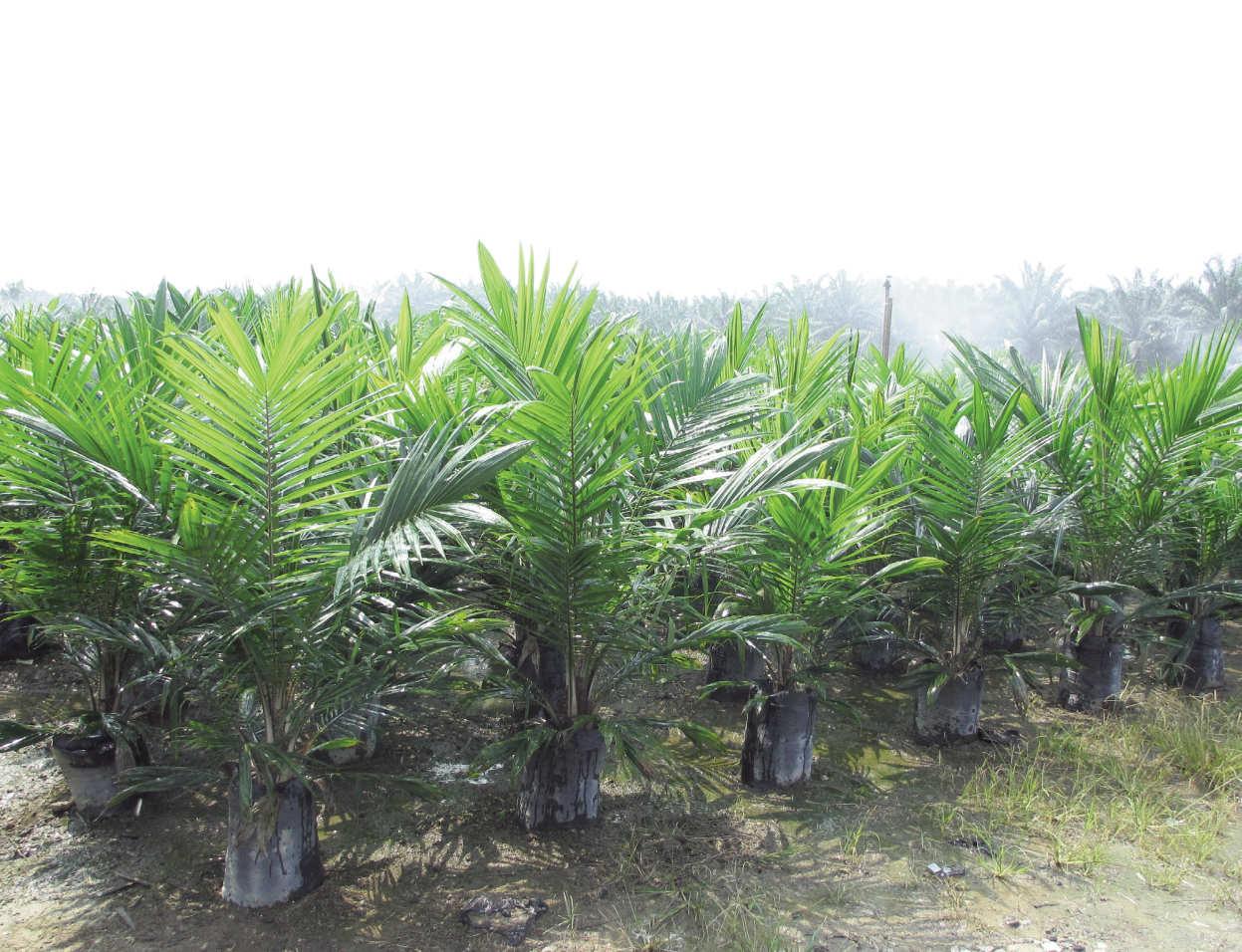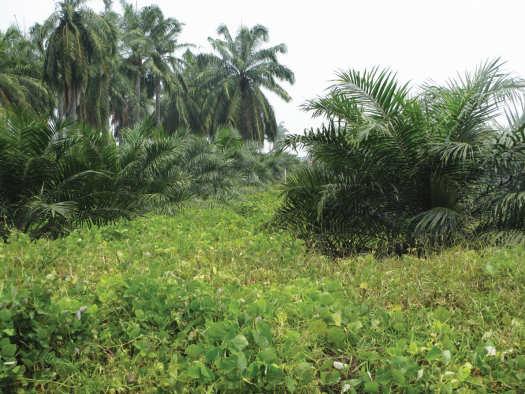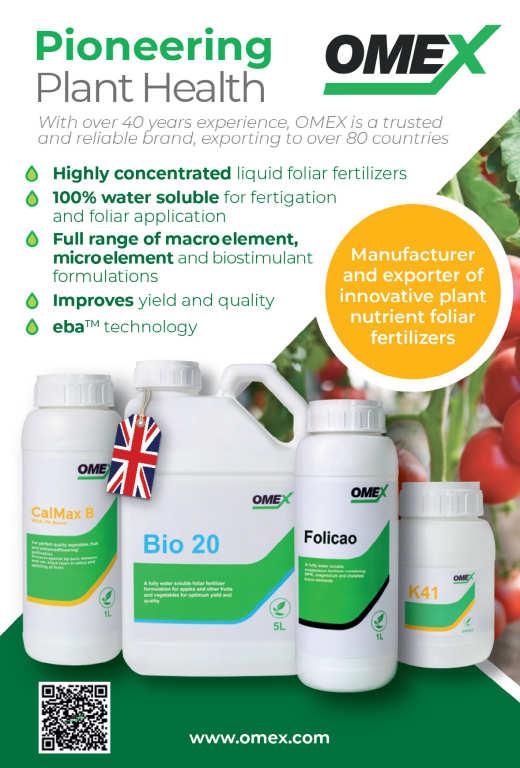
4 minute read
Seeding the success for oil palm
OIL PALM PLANTATIONS around the world have their roots in the humid lowland tropics of Africa and where the African oil palm (Elais guineensis) originates. It was first carried and spread by man from Senegal to Angola in a broad swathe along the coast and into the interior along the path of the Congo River.
Oil palm readily grows, multiplies and spreads itself in forest clearings and shifting cultivation will typically create large areas of semi-wild oil palm groves. Like most tropical tree crops, including rubber and cocoa, oil palm was originally exploited by ‘gatherer’ communities, who picked nuts from wild and semi-wild palms. In the nineteenth century, enterprising communities began to cultivate oil palm by planting seeds with regular trade in palm oil and kernels between West Africa and Europe, starting at this time.
Subsequent development of plant breeding technology has produced high fruit and oil yielding hybrids that underpin today’s large production and processing industries in Africa. Basically, there are three biotypes within the species E. guineensis distin- guished by the structure of the pulp and shell. This in turn will determine palm fruit quality and its economic importance. The three main types of oil palm within the species are:
1.The dura type which possesses a thick shell, of 2-8 mm thickness and a relatively small pulp comprising some 35-70% of the nut.
2. The pisifera biotype which lacks a shell.
3. Tenera, a natural hybrid of dura x pisifera with a thin shell (0.54.0 mm thickness) and an extremely high proportion of pulp that exceeds 90%. Tenera is further classified based on colour of the fruit as: a) nigrescens with violet to black unripe fruits, and ripe fruits with a brown or black cap, b) virescens having green unripe fruits ripening to reddish orange, and c) albescens without the reddish colour, because it lacks carotenoid pigments.
The tenera type usefully combines a thin shell (easy to crack during processing), and a high proportion of pulp. It is the biotype usually grown on commercial oil palm plantations, and dominated by the nigrescens fruit type as a series of commercial hybrids developed for high oil content.
However, along with plant breeding and the use of sophisticated hybrids, come restrictions and responsibilities related to the selection and germination of seeds. It is pointless for producers to ‘save their own seed,’ for these will just produce a mixture of sterile piserfa, dura and tenera palms, offering poor performance when compared with the improved plant material of the previous (parental) generation.
What’s more, seeds of the oil palm are slow to germinate with a low germination success rate and a lengthy pre-germination period. Germination of oil palm seeds is no easy business and requires heat treatment so that germination is synchronised and the seeds ‘all’ produce healthy first shoots (plumules) and first roots (radicles) at the same time. It is not a procedure for the small grower, but one that is best done by a central authority or large plantation which then sells the germinated seeds ready for planting to other growers. There are two vital steps required for the production of germinated seeds for planting, both of which are best carried out using a procedure called ‘dry heat treatment’ with seeds in polythene bags. They are:

1. Breaking of dormancy
2. Germination induction
The Germinator dried under the shade for several hours until they transform from a shiny black to a dull dark colour. This surface change signifies regaining of moisture to the desired level. Seeds are now returned to the polythene bags, which are sealed as before and placed in a cool situation. Bags are inspected and sorted once every seven days to remove seeds that have germinated (i.e. those showing an emerged radicle or at the white spot stage). Seeds that have not yet germinated are lightly sprayed with water and returned to the bag. Generally speaking, there is a delay of some 10-20 days after the 80-day treatment before germination gets underway. From then on, germination will be rapid and virtually complete within another 10-15 days. h
Dormancy break and germination induction are carried out in the same custom-designed ‘building’ called a ‘germinator,’ at specific temperatures and seed moisture levels and for varying lengths of time. A typical germinator comprises a separate and enclosed heated space for breaking dormancy and an associated ‘cool’ area where seeds are placed for germination, all within a customdesigned building.
The isolated, heated area is an enclosed chamber, equipped with double glazed windows, double walls with 13 cm space, and a double layered ceiling, all designed to insulate the structure and maintain the intensity and consistency of heat required. Inside are 61 cm wide slatted shelves, 35 cm apart, sufficient to support 1012 plastic bags per metre length of shelf. Each bag will contain some 1,000-1,500 seeds. The building is heated using conduction and convection through hot water pipes or electric heaters and is always thermostatically controlled.
Breaking of dormancy
On arrival at the germinator, seeds are given identification codes to distinguish between hybrids or seeds obtained from an individual cross. They are then held in darkness at ‘room’ temperature in an air-conditioned room until required for heat treatment. At this stage, seeds have a moisture content of about 10% weight/weight, and require daily soaking for seven days along with a complete renewal of water. Soaking and several hours of drying under shade restores the seeds to the higher moisture level required for breaking of dormancy using dry heat treatment.
Seeds are loaded into plastic bags of 0.2 mm thickness to give 1,000-1,500 seeds per bag. Each bag is meticulously ‘sealed’ by closing the end with a series of sequential folds, and finally securing it with heavy-duty adhesive tape. Bags are loaded onto the shelves and treated to a consistent temperature of 39C for 60-80 days (depending on the type of seed). Alternatively, growers can conveniently use self-made plastic bags from a 69 cm wide 500gauge flat tube. This is cut into 60 cm lengths with one cut edge sealed to make a bag. These bags are then filled with seeds and the open end is secured with a strong elastic band.
Germination Induction
At the end of the 80-day heat treatment period, seeds are resoaked for five days, with daily change of water. Seeds are then











